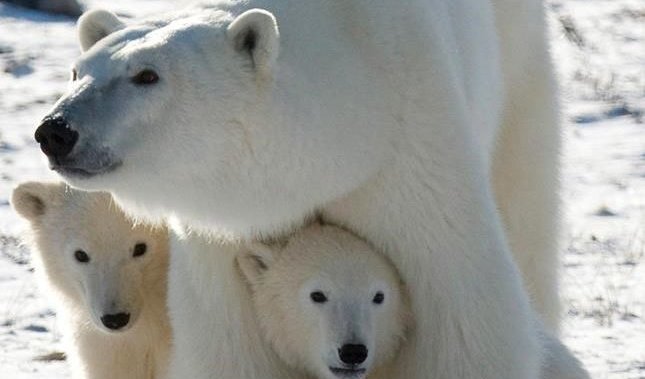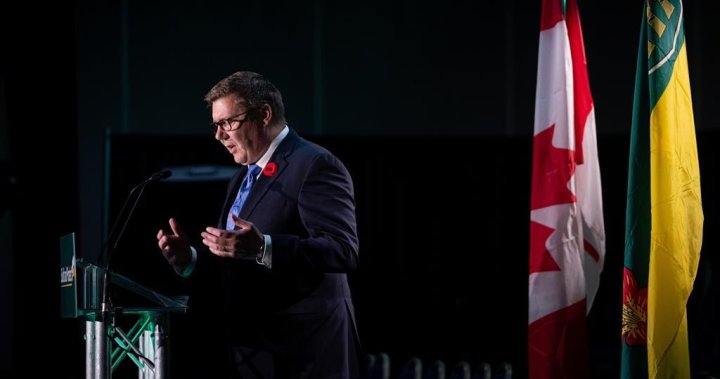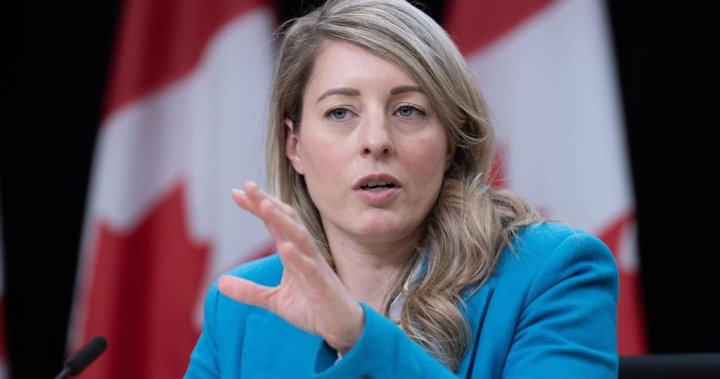For the last nine months, Emilio Pulla has been checking for weather updates in Italy. The reason Pulla, a Toronto-based wholesaler, is hoping for rain halfway across the world is that the lack of it — and the resulting hit to olive trees, and their buds — has been hurting his business.
“There were rumblings around nine months ago because the heat wave in Italy basically decimated the flowers,” he told Global News, “It was probably one of the worst ones we’ve seen in a long, long time.”
But the pressures have not eased. Geneviève Grossenbacher, director of policy at the Ottawa-based Farmers for Climate Solutions, said climate change is to blame.
“It’s mostly due to extreme weather, extreme heat waves and lack of rainfall,” she said.
Copernicus, the EU’s climate monitoring body, said in April that Europe is increasingly facing “bouts of heat so intense that the human body cannot cope, as climate change continues to raise temperatures.”
That includes countries like Spain and Italy, the largest and second largest producers of olive oil, respectively. Spain alone accounts for 40 per cent of the world’s production, but both are facing supply strains sending the costs of olive oil skyrocketing.
Pulla said those shocks have Canadian consumers feeling the pinch.
“It’s more than doubled,” he said. “I feel for the restaurants because people start cutting back when it gets expensive.”
He said in June last year, the wholesale price for a litre of extra virgin olive oil in the Greater Toronto Area was somewhere between $5 and $7.
Today, he said it has pushed over $20 a litre – a measure, he said, of how bad the recent shocks have been, and leading many Canadians to turn away from extra virgin olive oil, towards blends.
“People are moving more towards a blend of 20 per cent extra virgin olive oil and 80 per cent canola or soy oil,” he said.
Pulla said his suppliers in Italy have told him that rain might be around the corner and over the next six months, he expects prices to drop.
While he does not expect it to go back to the same levels as last year, he said he’s hoping for a $3 price drop by the fall.
But Grossenbacher said the price of olive oil is just an indication of the risk rising temperatures and drier climates pose to food supplies — and how interconnected Canada’s food supply chain is globally.
Breaking news from Canada and around the world
sent to your email, as it happens.
According to a 2022 report, two-thirds of the world’s calories come from four staple foods: wheat, rice, maize and soybeans. At least 72 per cent of these crops are grown in just five countries: China, the United States, India, Brazil and Argentina. A climate catastrophe in any one or more of these countries could send the entire world into a food crisis, the report said.
“Climate change increases the likelihood of global ‘synchronized’ production shocks – multiple major staple food producing and exporting countries facing simultaneous crop shortfalls simultaneously,” the report said.
The report said wheat – 65 per cent of which is produced in water-scarce environments – will be the most vulnerable of all the major staples.
Climate change is already having an impact on food supplies, particularly in Canada.
“In Western Canada, multiple climate disasters – including extreme heat, drought and forest fires, followed swiftly by unprecedented rainfall, landslides and flooding – wreaked havoc on food production in 2021: wheat production plummeted by 35 per cent and canola by 14 per cent, 1.3 million farm animals died, and 80 per cent of commercial shellfish stocks were wiped out in a massive die-off,” the report said.
Grossenbacher said in the last few years, Canada’s food supply has been hit.
It’s olive oil one year, but it could be corn or grapes another year.
“The wine production in B.C. in the last season has been horrible. They’re really at risk of losing almost all of their production,” she said.
While Grossenbacher’s diversified vegetable farm in the Outaouais region of southwestern Quebec has been largely insulated from the worst effects, she said her neighbours lost almost all of their blueberry production last year because of extreme weather in the region.
“We’re seeing a lot of farmers this year questioning if they can stay in farming just because the weather is becoming so extreme and so unpredictable,” she said.
“In the past 13 years in my area, there’s been the worst two droughts of the past 100 years and the worst two floods.”
Grossenbacher said the Canadian government needs to urgently invest in climate resilience in agriculture. She said this could include measures like building irrigation capacity, developing drought-tolerant farming techniques and building more greenhouses for year-round production.
She said the government should also facilitate farmer-to-farmer learnings, so that those who’ve managed to figure out techniques that work are able to share with others.
Grossenbacher said the insurance cover for crop damage should also be increased so that farmers are not deterred from farming as a means of livelihood.
“Last year in Quebec, a farm that I know lost $500,000 in crops,” she said.
Grossenbacher said farmers need help.
“We need financial support from the government. The government has done a lot in recent years, but we need to do a lot more,” she said.
She said the recent olive oil shortages should prompt all Canadians to ask some tough questions.
“Are we going to make the choice as a society to really invest in our capacity to adapt to climate change and to move towards a low-emissions, high-resilience agriculture?”




